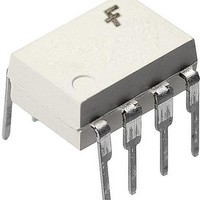FSL116HR Fairchild Semiconductor, FSL116HR Datasheet - Page 11

FSL116HR
Manufacturer Part Number
FSL116HR
Description
Power Switch ICs - POE / LAN Green Mode Fairchild Power Switch (FPS)
Manufacturer
Fairchild Semiconductor
Datasheet
1.FSL116HR.pdf
(13 pages)
Specifications of FSL116HR
Number Of Switches
Single
On Resistance (max)
10 Ohms
On Time (max)
10 ns
Off Time (max)
14.9 ns
Supply Voltage (max)
26 V
Maximum Operating Temperature
+ 105 C
Minimum Operating Temperature
- 40 C
Package / Case
DIP-8
Maximum Power Dissipation
1.5 W
Mounting Style
Through Hole
Operating Frequency
100 KHz
Switch Configuration
Single
Switch Current (typ)
1.1 A
Lead Free Status / Rohs Status
Details
Available stocks
Company
Part Number
Manufacturer
Quantity
Price
Part Number:
FSL116HR
Manufacturer:
FAIRCHILD/仙童
Quantity:
20 000
© 2010 Fairchild Semiconductor Corporation
FSL116HR • Rev. 1.0.0
Output-Short Protection (OSP)
If the output is shorted, steep current with extremely
high di/dt can flow through the SenseFET during the
LEB time. Such a steep current brings high-voltage
stress on the drain of SenseFET when turned off. To
protect the device from such an abnormal condition,
OSP detects V
V
is lower than 1.0µs, the FPS recognizes this condition
as an abnormal error and shuts down PWM switching
until V
output is shown in Figure 20.
Soft-Start
The FPS has an internal soft-start circuit that slowly
increases the feedback voltage, together with the
SenseFET current, after it starts. The typical soft-start
time is 20ms, as shown in Figure 21, where progressive
increments of the SenseFET current are allowed during
the startup phase. The pulse width to the power
switching device is progressively increased to establish
the
inductors, and capacitors. The voltage on the output
capacitors is progressively increased with the intention
of smoothly establishing the required output voltage.
Soft-start helps to prevent transformer saturation and
reduces the stress on the secondary diode.
Burst Mode Operation
To minimize power dissipation in Standby Mode, the
FPS enters Burst Mode. As the load decreases, the
feedback voltage decreases. As shown in Figure 22,
the device automatically enters Burst Mode when the
feedback
FB
is higher than 1.6V and the SenseFET turn-on time
Figure 20. Output Short Waveforms (OSP)
correct
CC
reaches V
voltage
Figure 21. Internal Soft-Start
FB
working
and SenseFET turn-on time. When the
START
drops
conditions
again. An abnormal condition
below
for
V
BURH
transformers,
.
Switching
11
continues, but the current limit is fixed internally to
minimize flux density in the transformer. The fixed
current limit is larger than that defined by V
and, therefore, V
continues until the feedback voltage drops below V
At this point, switching stops and the output voltages
start to drop at a rate dependent on the standby current
load. This causes the feedback voltage to rise. Once it
passes V
voltage then falls and the process repeats. Burst Mode
alternately enables and disables switching of the
SenseFET and reduces switching loss in Standby Mode.
Adjusting Peak Current Limit
As shown in Figure 23, a combined 6kΩ internal
resistance is connected to the non-inverting lead on the
PWM comparator. An external resistance of Rx on the
current limit pin forms a parallel resistance with the 6kΩ
when the internal diodes are biased by the main current
source of 400µA. For example, FSL116HR has a typical
SenseFET peak current limit (I
adjusted to 0.8A by inserting Rx between the I
the ground. The value of the Rx can be estimated by
the following equations:
1.1A
where X is the resistance of the parallel network.
X =
Rx
:
Figure 23. Peak Current Limit Adjustment
0.8A
||
6kΩ
Figure 22. Burst-Mode Operation
BURH
=
6kΩ
, switching resumes. The feedback
:
FB
XkΩ
is driven down further. Switching
LIM
) of 1.1A. I
www.fairchildsemi.com
FB
LIM
PK
= V
pin and
can be
BURL
BURH
(1)
(2)
.





